Why Cloud Campaign?
Cloud Campaign is the best social media management solution on the market. I’ve used close to a dozen platforms and researched dozens more and nothing compares to this forward-thinking system.
Cloud Campaign does more than any other platform, but some of the features that set it apart really need to be seen and experienced in order to understand exactly what makes it superior to any of the other systems. The functionality is sophisticated and extensive.
For me, these are standout features and functions that make it so special.
Content Library & Categories
House the entirety of your evergreen content within Cloud Campaign to create your very own curated filing system. With the use of a strategic tags system, it’s incredibly easy and convenient to store, find, update, and reuse content from your library.
For example, you can have tag categories related to a season, like Christmas or Tax Season. House content in your library and then easily populate your schedules again next Christmas or Tax season to leverage evergreen content related to those seasons.
You can also use multiple tags for smart content management. For example, you might add both “Christmas 2022” and “November-December Blog Posts” tags to a Christmas-related blog post to give you flexibility of how you might want to approach that piece of content again in the future. Or for a meme about Tax Season you could tag it with both “Memes” and “Tax Season” for various future use cases.
Use the tagging system according to your individual needs. Here are a few ideas:
- Blog posts
- Curated content
- Promotional content
- Behind-the-scenes content
- Industry tips, tricks & insights
- Seasonal tags
- Specific campaigns
- & more
This might not sound like much on its own, but once you’ve saved your content with strategic tags, you’ll be able to dive into the unique scheduling options. Once you’ve tried out this content library system, you won’t know how you ever lived without it.
Another content feature that may seem obvious but is certainly not common among other platforms, is just how easy it is to customize your post copy for multiple social platforms; a shorter version for Twitter, removing emojis for LinkedIn, a revised CTA for Instagram, etc. This isn’t just true when you create the post the first time, but also when you need to edit the post later, because all of the content for each platform stays connected. I can’t believe how irritating it is on Buffer or Hubspot when you want to edit a post and you have to seek out the Facebook, LinkedIn, Twitter, and Instagram versions all separately.
Better still, you can create multiple “hooks” to go with each piece of content so that the same blog post might go out a few times but with different copy each time to entice people to click and read.
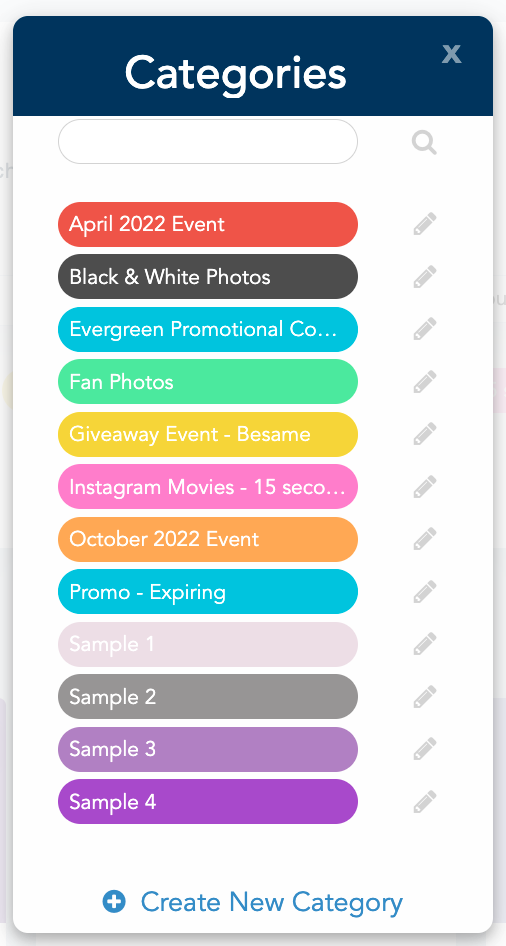
Schedules
Autofill schedules or fill them manually. Turn them on and off. Include content with a single Tag or a mix of Tags. Drag and drop content within each schedule if you change your mind about when it should appear. Have new content automatically added to the beginning of the schedule or push it to the end of the schedule. Set schedules for a single platform, like Instagram, or for a mix of platforms like Facebook, Twitter, and LinkedIn.
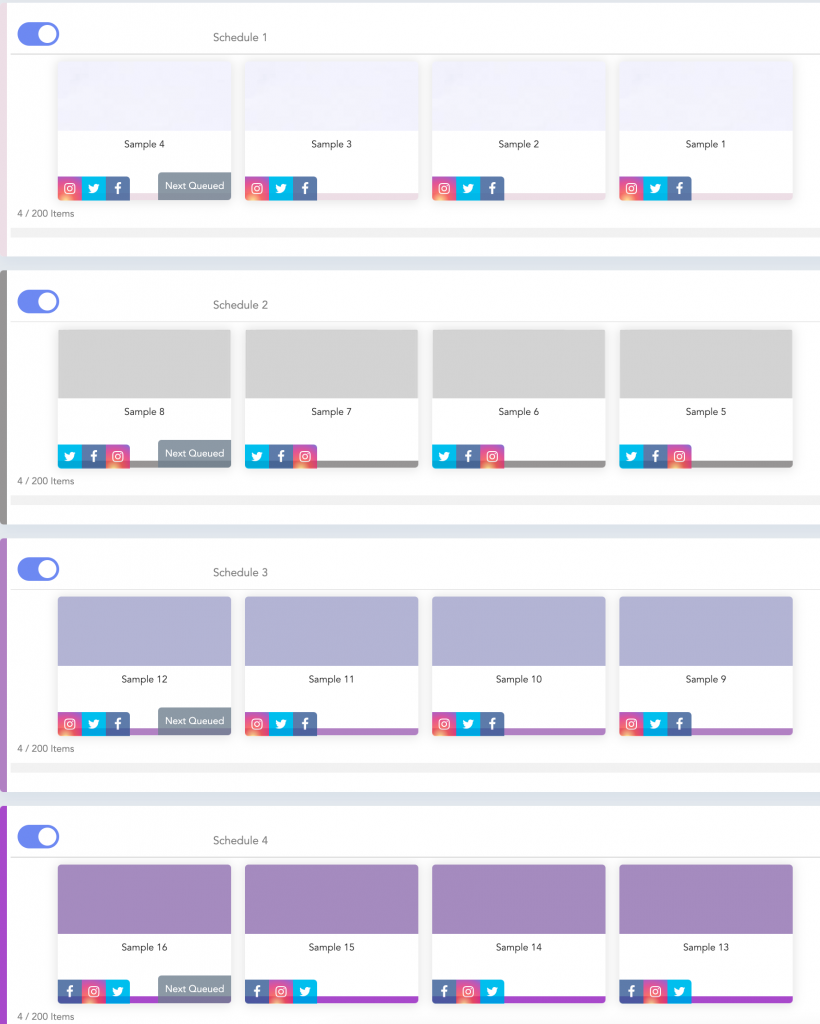
It’s helpful to approach this visually with Instagram in mind. Here I’ve used colours to “code” the type of content I want to share, with each colour representing different content Tags. By turning schedules on or off, you can create different posting schedules.
The Checkerboard
Two schedules – Option A

In the checkerboard example, there are two simple schedules that are posted on alternating days.
- Light purple
- Mondays, Wednesdays, Fridays
- Dark purple
- Tuesdays, Thursdays, Saturdays
The Single-Diagonal
Two Schedules – Option B

In the single-diagonal example, there is one main schedule, with a secondary schedule that posts once every four days.
- Light purple
- Tuesdays, Wednesdays, Thursdays
- Dark purple
- Fridays
The Multi-Diagonal
Four schedules

In the multi-diagonal example, there are four schedules that post on an equal basis.
- Light purple
- Tuesdays
- Dark purple
- Wednesdays
- Grey
- Thursdays
- Lavender
- Fridays
Expiring Content, “Use Once” & Drip Schedules
Of course, not all content is evergreen. You can set content to be shared just once, like a one-time announcement, or you can turn off recycling of that piece of content.
You can also set expiry dates so that content can be posted repeatedly but only up until a certain date. With the Tax Season example, this is great if you have news to share several times this year but that won’t be relevant next year.

Drip Schedules are also very convenient, allowing you to have content shared this week, next week, next month, and several months from now, with the ability to control how many times it will go out before it has completed its share cycle.
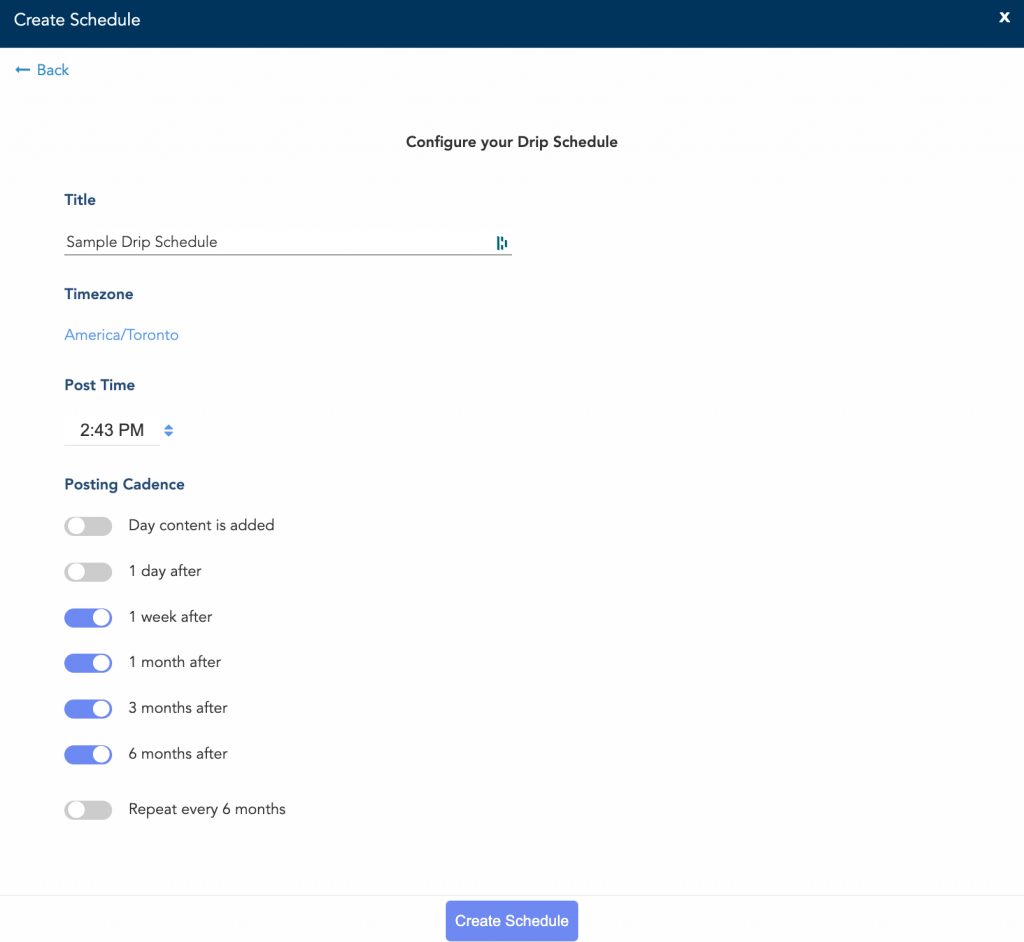
These options provide so much flexibility when mixed in with your “true” evergreen content that never expires. Options, options, options.
Hashtags & CTAs
Organize groups of hashtags and CTAs in advance and save them to be added to your content with just two quick clicks. This is such a time saver and also allows you to be very deliberate with your calls-to-action. For example, you might save your hashtag groups as follows:
- Twitter Hashtags – group 1, 2, 3 (or more)
- Facebook & LinkedIn hashtags – group 1, 2, 3
- Instagram hashtags – group 1, 2, 3
- CTA 1, CTA 2, CTA 3 (you could group your hashtags with CTAs or without depending on how you’d like to use them)
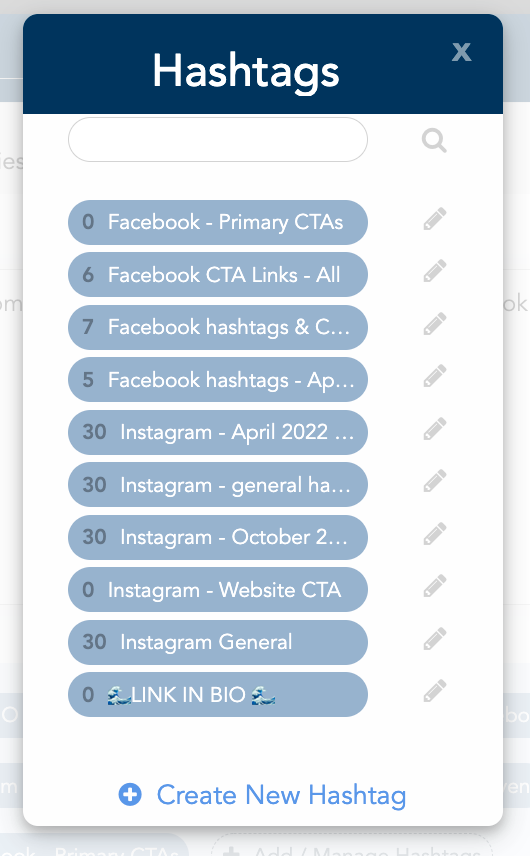
Client Approvals
The streamlined client approval process creates a user-friendly experience for your clients and streamlines the entire agency process. I love that the client can see how the content will look on each individual platform and that they can leave comments attached to the specific copy and graphic. If you’re not using the client approval process, you’re really missing out.
Reporting
It’s so important to be accountable to your clients and the Cloud Campaign reporting system is comprehensive and easy for the clients to understand. The reports include both organic and paid advertising data and integrate with Google Analytics for website metrics.
Not every client has time to make sense of extensive data, which is why I love the option to highlight three main ROI metrics:
- Cost per Exposure
- Cost per Engagement
- Cost per Follower
You simply plugin the management cost for the month’s campaign and the system calculates these metrics. Or, if you’d rather hide some or all of these paid metrics, you can easily do so but unchecking the ROI metrics boxes.

The Cloud Campaign reporting is extensive. This is just one section of the report overview:
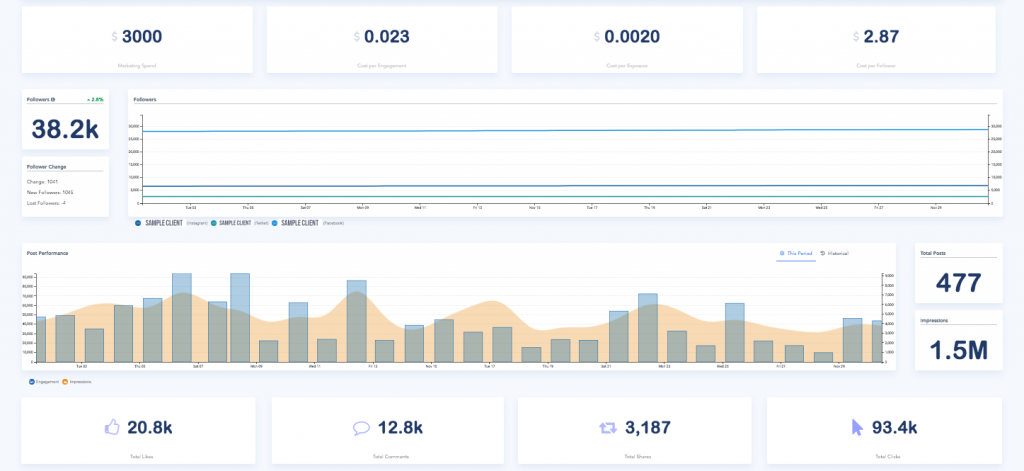
Bringing It Home
These are just a few of the features that make Cloud Campaign a particularly unique and special social media management solution. With the support of superior tools to assist with your marketing campaigns, your ability to scale multiplies exponentially. There are so many more, and I think that it’s time for this “best kept secret” to flourish and become a household name among agencies. Check out Cloud Campaign now.